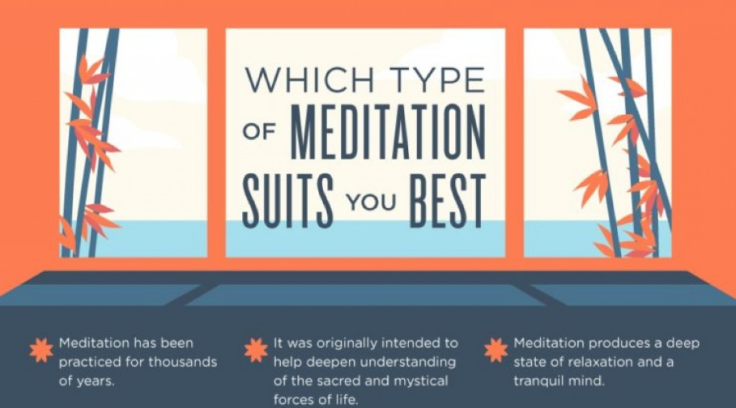Mindfulness Meditation To Tai Chi: How To Meditate And The Best Meditation Technique For You

We live in a society that embraces the art of multitasking. Cell phones, laptops, and other electronic devices allow us to order coffee, send an email, and even book a business trip all while commuting to work, but this busyness clouds our ability to live in the moment. However, meditation has been shown to help us stay connected, stay present, and worry less about the future.
In the infographic, “Which Type of Meditation Suits You Best?” Club Woodside and Ghergich & Co. show meditation can help alleviate the effects of a busy lifestyle by producing a deep state of relaxation and a tranquil mind. Meditation can help us gain a new perspective on stressful situations, increase self-awareness, build skills to manage stress, and reduce negative emotions. For example, a 2013 study in Social Cognitive and Affective Neuroscience found four 20-minute mindfulness meditation classes could help reduce normal, everyday anxiety.
There are many types of meditation and practices that incorporate meditation, from mindfulness meditation to tai chi. Typically, for beginners, guided imagery meditation helps you form mental images of relaxing places or situations. The goal is to use as many senses as possible, including: sight, smell, sound and feel.
Meanwhile, tai chi is more physical as practitioners perform a self-paced series of postures or movements slowly and methodically while ”breathing deeply” or “practicing deep breathing.”
The goal is to find tranquility and help people think more clearly.
Meditation doesn't have to be stationary. You can go for a mindful walk (without a particular destination in mind) and focus on the movement of your legs and feet, and repeat words like “lift,” “move,” and “place” with each step. Simply listening to music that makes us feel relaxed and/or inspired is also helpful in promoting feelings of relaxation and tranquility.
Take a look at the other meditation techniques down below that can best fit your lifestyle.
Published by Medicaldaily.com




























